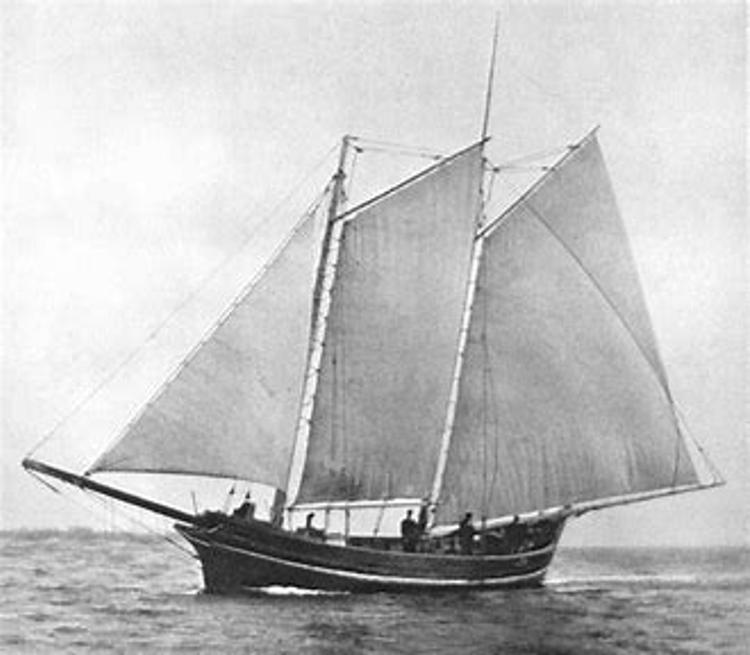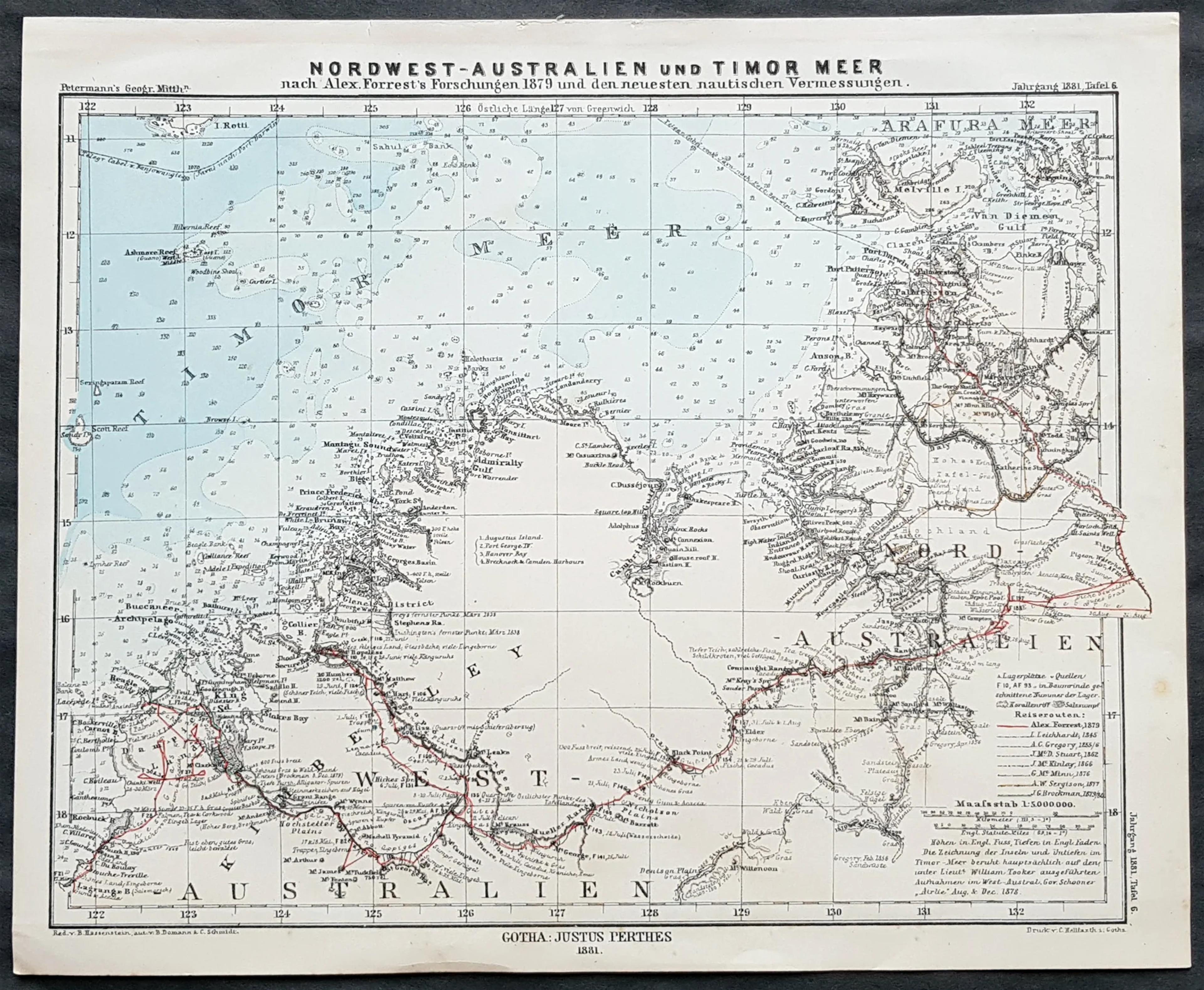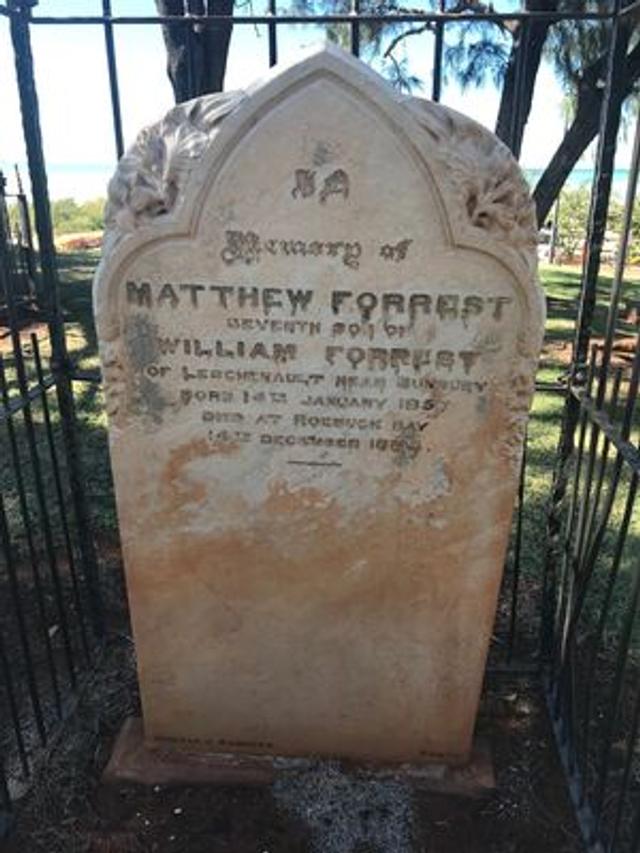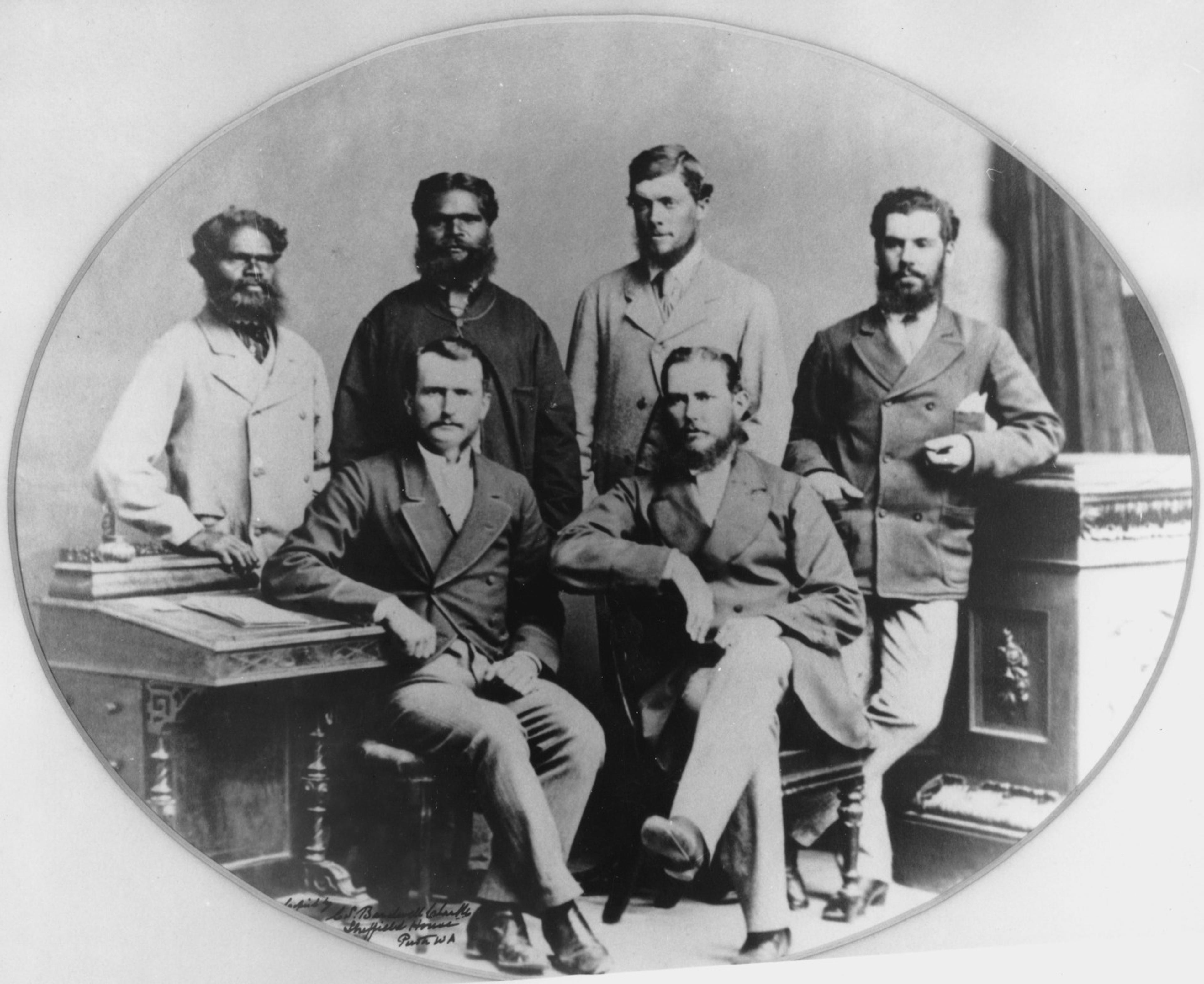Matthew Forrest
Vessel Name: Pearl
Matthew Forrest
Died aboard the Pearl; body recovered
14 December 1884

Schooner


Matthew's head stone

Expedition team
Matthew Forrest was born on 14 January 1857 in Picton, Western Australia to Scottish parents, William Forrest and Margaret Guthrie Hall. Sadly, their first-born child, Mary died at the age of two years, prior to them leaving Scotland. William was a farmer who built a flour mill in the Leschenault area, becoming one of the south west’s earliest settlers. William and Margaret’s children played an integral part of exploring, settling farmland and establishing state law in WA.
Matthew was the second youngest of six boys. His younger brother Augustus died at the age of 18 months. The eldest brother William became a farmer and flour mill operator like his father. James became a farmer in the same area. John became the noted Sir John Forrest. Alexander was an explorer and politician. Robert took on the flour mill.
Alexander was given a grant by the Surveyor General of WA for 26 horses and six months of provisions to explore the area from the DeGrey River inland for 700 miles along the Fitzroy River, west to the Leopold Range, Northwest to Collier Bay, finally meeting up with the Adelaide-Darwin telegraph line.
The team of explorers was Alexander as leader, Fenton Hill, geologist and second in charge, John Campbell, James Carey, and Matthew who was 22 years of age. Dower and Pierre, two Aboriginal men were part of the team.
The rough terrain and incessant heat created hardship for the explorers. Their resources for did not last and they almost died from a shortage of food and water. Despite everything, Alexander surveyed and created a geographical map marking pastoral land, mineral deposits and water sources.
Matthew experienced a severe heat stroke, the effects of which never left him. The government rewarded him with a grant of 2000 acres of land in the Kimberley.
In 1891 Matthew [24 years old] had a son Claude with Grace Margaret Forrest [15 years old] from Greenough. Grace married George Frederick Cross, a farmer in Busselton later that year and went on to have five more children.
Matthew’s first command was on the 25-ton pearl cutter Dolphin. He was part of a conglomerate that purchased her in 1877, and Matthew was one of two masters who operated her. She was built in Fremantle in 1875 and registered as No. 8 of 1875 [Official number 72472]. Her dimensions were 48.39 feet long [14.7 metres] x 15 feet beam [4.57 metres] x 6 draught feet [1.83metres].
Dolphin was a catcher/carrier boat. She had luggers gathering pearl, and divers working from her deck. Once the hold was full of shells, she delivered them to Fremantle for sale, returning with provisions, stock, passengers and anything else required for the settlements and stations on the route back to the northwest. This service was financially agreeable and added to the pearling profits.
Matthew worked shell grounds from Shark Bay to Condon, basing himself in Roebuck Bay and moving with the northwest fleet from ground to ground throughout the season. Tragically, Matthew’s nephew John Norman died aboard the Dolphin in 1883. He was the son of Matthew’s brother David and his wife Mary Parker.
On 16 January 1884 Matthew was in command of Dolphin when a cyclone struck Roebuck Bay. She was working with three schooners, Myra, Expert and Annie Taylor. All vessels were at anchor, with preparations in place for the gales that came. The barometer dropped quickly from 30 to 28.65, the wind blew up in gales.
As the wind strength increased, it became obvious to the boats at anchor that they would not survive the huge seas. Their vessels would sink, and they would all drown on board. The four boats slipped their anchor chains and drove onto the beach, which was about half a mile ahead.
The Dolphin had waves washing completely over the top of her and threatening to sink her. The crew made the difficult decision to jump overboard and attempt the half mile swim to shore, rather than be washed overboard and drown, or drown aboard the boat.
The crew jumped. They swam as hard as they could against the huge waves. Eventually they reached the surf, and they could not get through the surging white water. They were seen from the shore by the crew of the Gypsy. Two of their Aboriginal divers, Ned and Tinker, swum out into the surf and dragged the crew of the Dolphin onto the beach.
Three of the Aboriginal divers from Dolphin were lost without a trace during the swim to shore. Their names were not recorded. [See Three Unnamed Aboriginals story].
Dolphin was refloated and put back to work until she foundered and sank at Point Sampson in 1902.
Matthew became the part-owner and master of a schooner called Pearl. She was a30 ton two-masted schooner built by Charles Watson in Fremantle in 1870, registered as number 7 of 1873, with the official number 61111. Her dimensions were 17.4 x 4.6 x 2.1 metres. She was built for Shark Bay pearlers, and sold on in 1881 to a conglomerate of Roebourne farmers and pearlers, although there is no official record of the sale.
Pearl worked the shell grounds from the northwest coast to Darwin with Mattew in command and Dudley Brockman as mate. Matthew remained based in Roebuck Bay where he had built a reputation as a well-known and respected pearler.
In 1884 there was a measles epidemic. Europe had a widespread outbreak, and vessels coming to WA brought infected crew and passengers. The illness quickly spread via the boats voyaging up and down the coast. Seamen fell prey to measles due to their poor diets and low immunity. The 1884 pearl export was reduced significantly. It was attributed to the loss of Aboriginal divers from the measles epidemic, an illness they had no immunity for. As many as forty Aboriginals died from measles in one Fitzroy family group.
In December 1884 Matthew was working the Pearl with her luggers in Roebuck Bay. He became ill. Matthew had never regained full health after the expedition in 1880, and the humid air of the northwest wet season added to his condition. He died aboard the Pearl on 14 December from measles and pneumonia. He was 27 years of age.
Matthew was buried in the Seafarers’ Cemetery overlooking the harbour. He has been joined by just a handful of celebrated Broome residents. The area has been preserved as the Broome Pioneer Cemetery. Pemberton Walcott, Inspector of Fisheries was the first to be buried there in 1883 and Matthew was the second.
Matthew’s son Claude married Mary Wallbank in 1906. They had four children over the next 11 years: Dora Winnafred, Waveney Grace Prest, Mervyn Claude and Joseph Wallbank. He died in 1947, aged 66 years and was buried at Boyup Brook.
Pearl continued to work, although when Matthew died the European crew members brought the boat in from the shell ground and refused to finish the season. The Aboriginal divers were transferred to Pearl’s sister schooners Myra and Gypsy. Sea men are a superstitious bunch, although in the case of the Pearl they may have been right. She saw many more adventures, including murder before she foundered during a heavy gale off Point Gantheaume on route from Broome to Lagrange Bay in 1891.
